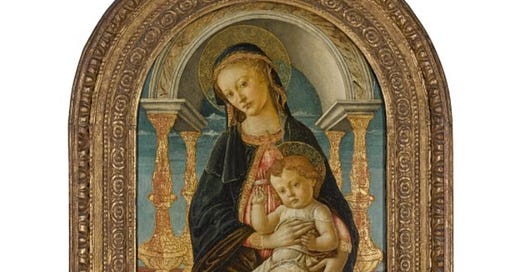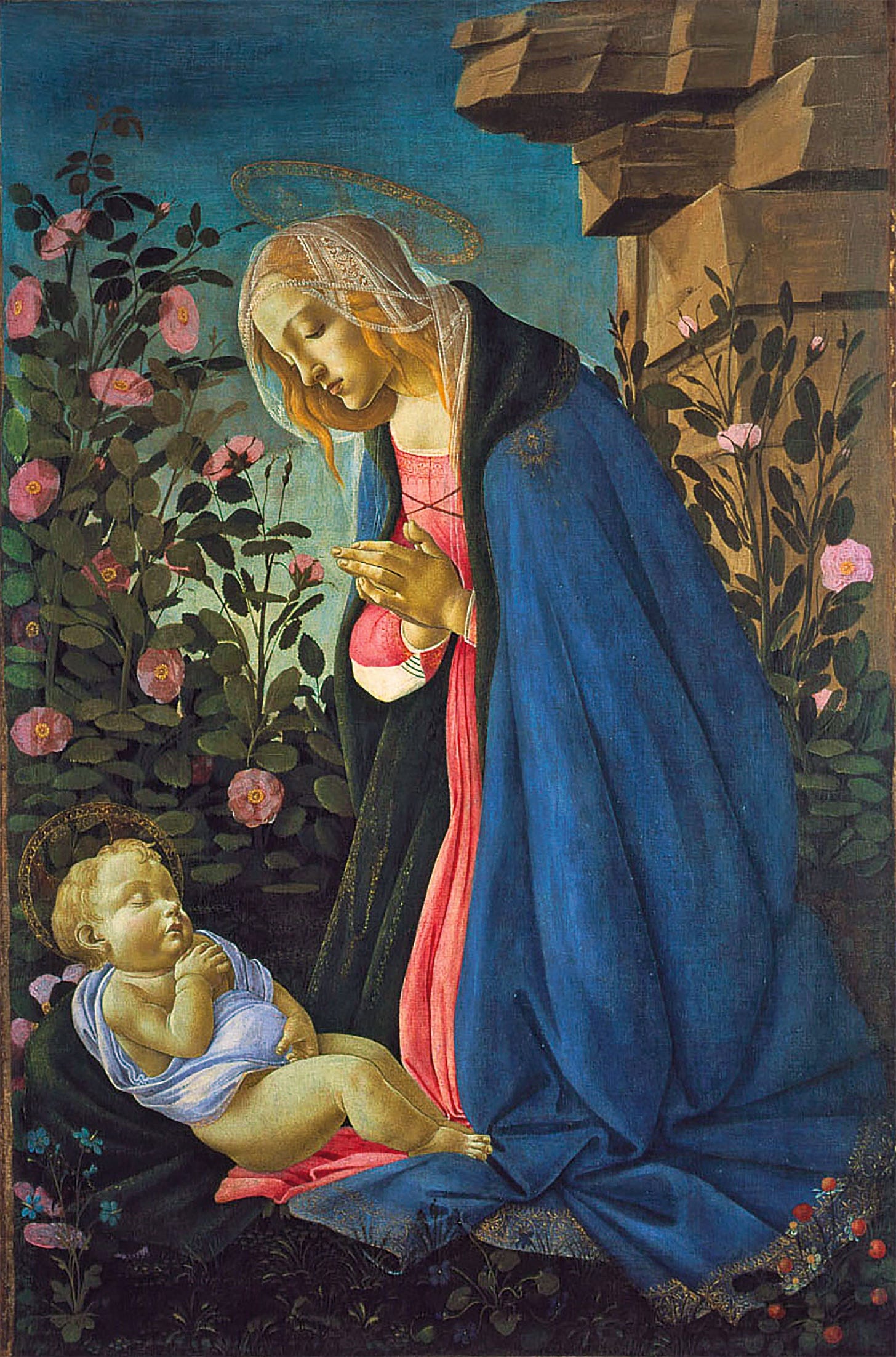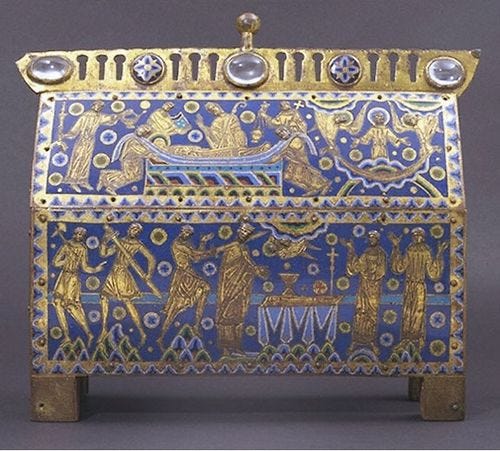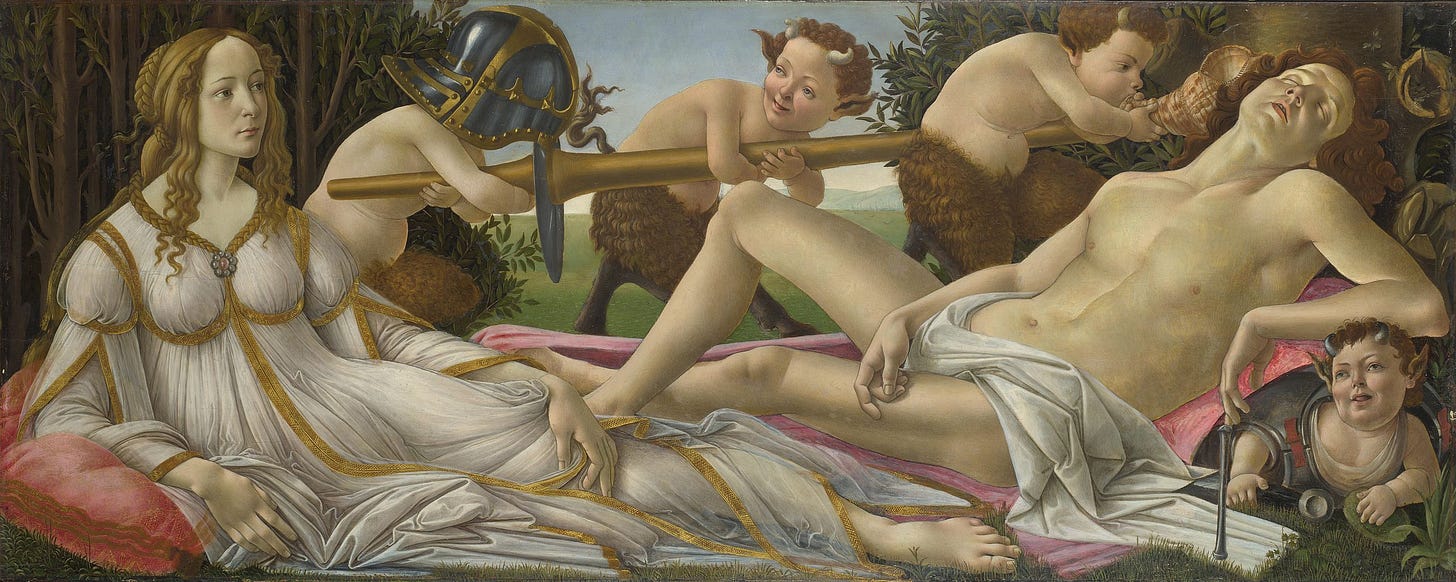Hold the front page! Get the collecting tins out! The UK government has banned the export of this painting by Sandro Botticelli, and is appealing for a British gallery or institution to raise a mere £10 million to ensure its continuing existence within these shores.
The ‘endangered’ painting in question
Welcome to another tiresome campaign to “save” an art work. From what? Extermination? Mould? Fire? No, from travelling abroad to be re-homed by Jonny Foreigner. As an arts hack of many years standing, I am weary of these campaigns. During my career as BBC arts correspondent, I can readily list at least four such heart-stopping fundraisers, which I was obliged to cover.
There was the scramble for the Beckett ‘Chasse’ for the V&A (a jewelled box made to keep relics of St Thomas a Beckett), the panic over Canova’s Three Graces (a tarty scuplture), the alarm for a history painting by Guercino (who?), and the furore about Raphael’s Madonna of the Pinks (a cheesy painting). All four were threatened with export. All four were eventually “saved” for the nation. Has our cultural life been significantly augmented since these art works were secured on our shores? No. Is this latest one any different? Hard to see how.
Is this Botticelli, an early Madonna and Child, a well known and particularly beloved image for small children, football clubs, Christmas cards, art history students, religious people or in any way the public at large? No, largely because it has been in a distinctly private collection for the last 100 years.
According to The Arts Newspaper, it was originally housed in a Florentine convent, and then found its way into the books of the Italian dealer Elia Volpi in 1903, who promptly sold it to a British aristocrat named Lady Wantage, for five grand. And there it stayed, until the descendants of Lady W flogged it at Sotheby’s last December for nearly £10 million. Good old Lady Wantage, what a great buy.
Hilariously, the co-chairman of Old Masters at Sotheby’s, Alex Bell, said of this sale “Lady Wantage spent several months negotiating the purchase….having finally secured it, she took the painting home, where it has been admired by her and her descendants ever since. Unseen in the public for nearly a century, it largely escaped the attention of leading scholars in the field.”
So there we have it. We must now dig deep in our collective pockets and demand a cash-strapped gallery to hold all sorts of dinners, jumble sales and sponsored paint-ins in order to purchase a picture, unknown even to Botticelli experts, never seen by the general public, and which for the last 100 years has hung on the walls at the home of a wealthy family, now £10 million wealthier.
One has to ask whether the British public has been starved of Botticelli up until now. The answer is probably no. There are three Premier League Botticellis in the National Gallery, including one so famous it was actually in my A Level History of Art paper. The British Museum has three drawings by the master.
We have form, however, in Saving Botticelli. His Virgin Adoring the Sleeping Christ Child, currently hanging in Edinburgh at the National Gallery of Scotland was “saved for Scotland”, after a “frantic effort”, says the gallery, launched in order to stop it going to those hokey cowboys at the Kimbell Museum in Fort Worth, Texas, who had bought it. “The acquisition of this picture must count among the most dramatic purchases in our history,” says the Gallery.
Thank the Holy Father we are not in Fort Worth
But why should it stay in Scotland, and not go to Fort Worth? Is it because it might be seen by people in cowboy boots? Botticelli himself may never have been to the Lone Star State, but he certainly never strolled around Edinburgh, either. Arguably the balmy Texan sun is more akin to the light of Florence, and so the picture might have worked better under Fort Worth’s warm daylight than in the dreich atmosphere of the Scottish capital, but I only hazard this suggestion.
When a gallery wants to have a large Botticelli exhibition, it can always borrow the necessary art works. There are quite a lot to go around; it’s estimated he painted over 200. For its 2016 show Botticelli Reimagined, the V&A gathered together 50 paintings by the master and staged a fabulous show, bursting with scholarship and fresh ideas. The National Gallery has just loaned Venus & Mars to the Fitzwilliam in Cambridge. And so on.
It's a strange cultural nationalism, mingled with barely concealed snobbery which runs beneath campaigns such as this one. No! Texans must not see a master of Early Renaissance art, because we got him first. And we are nearer Italy, and we understand art better. It must stay in the UK because, well, we are more cultured.
Let’s not mention the messy fact that a whole lot of stuff in British collections is there thanks purely to the spoils of colonialism and monarchical competitiveness.
Yes, our main galleries and museums are free of charge. And after being “saved” for the nation, this Botticelli (even though nobody had access to it before) might well end up in a public collection, free for all to enter. Like the Walker Art Gallery in Liverpool. Or Hull’s Ferens. It’s unlikely, but possible. Does our policy of free admission give us the moral high ground? It’s hard to see why.
Frankly, campaigns of this kind tend to be more about the gallery fronting them than the art work itself. After the Beckett Chasse had been dramatically ‘saved’ for the nation by the V&A I happened to mention it to the then director of the British Museum, Neil McGregor. “We have four Chasses in our collection already,” he said, with a wry smile.
V&A campaigned for this (above), while this (below) was sitting quietly with its fellow Chasses at the British Museum. Nice to know they are spread across London, I suppose.
London’s big galleries and institutions (where the Botticelli, if saved, will probably end up) should frankly save their fund-raising energies for something a bit less glamorous but arguably more important, such as community engagement schemes, lending arrangements to less generously endowed organisations, or longer opening hours.
Glad to have sorted this issue out. Now, I’m off to see the three gorgeous Botticellis in the newly-arranged National Gallery, one of of which is this.










Yes! And just imagine what the many millions spent on individual works could do if put into something like oh I don’t know teaching musical skills in state primary schools….
This is a crackingly good piece - thank you